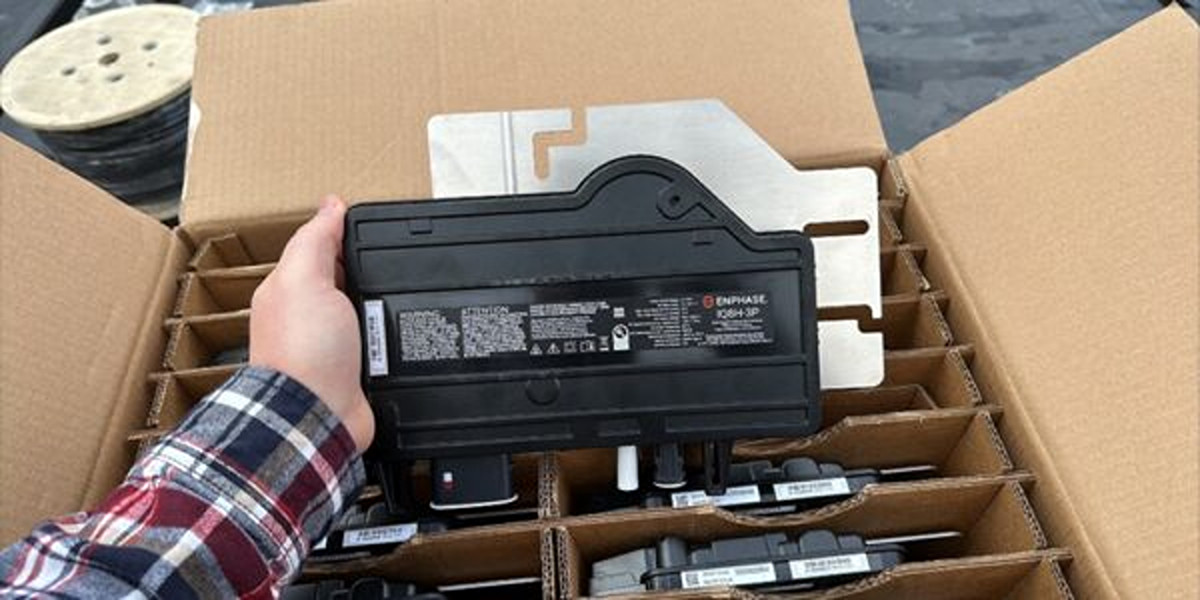From pv magazine USA
Microinverter manufacturer Enphase has officially launched a new 208 V three-phase offering.
The company said that it is also offering a focused support team and design tools for small business solar projects.
It added that system.sized blocks of 200 kW will most efficiently maximize the hardware on a cost-per-watt basis.
Previously, 240V single-phase residential Enphase inverters could be configured into 208V three-phase commercial systems.. However, this required meticulous system design and additional “Q Cables.” The new 208V system offers more flexibility in string design and simplifies installation with a new four-wire 208V Q Cable.
Eric Bergman, Commercial and Industrial Sales Director at Enphase, touted the advantages of the new system to pv magazine USA. Bergman said that installers used to have to “physically land the output of the micros evenly across the three phases of the site.”
Installations also used to require a network protection relay, necessitating an external enclosure. The new IQ8 C&I microinverter comes with the four-wire QD Cable, which integrates phase balancing, V/F ride-through, and loss of phase detection – functions previously managed externally by the Network Protection Relay.
Enphase saie that all hardware and associated equipment will be classified as domestic content, potentially qualifying for the 10% US Inflation Reduction Act tax credit adder. However, the definitive guidance from the Internal Revenue Service is still pending.
US production of the commercial inverter is set to begin in the first quarter of 2024. Enphase is initially focusing on the core functionalities of the 208V equipment, with plans to introduce additional features like grid-tied load support, energy storage integration, and 480V three-phase support in the future.
Bergman noted that a large, skilled workforce is already trained to sell and install these systems.
“Right now, the nation is seeing a bit of a slowdown in residential solar sales. At the same time, commercial solar contractors are having a challenging time finding installation crews,” Bergman said. “The 208 V gear gives both groups multiple opportunities. Residential installers who’ve been installing Enphase their whole careers can be tapped by commercial groups to help them deploy these systems, or sell to small businesses on their own.”

This article was amended to state that previously, 240V (not 120V) single-phase residential Enphase inverters could be configured into 208V three-phase commercial systems.
To continue reading, please visit our pv magazine USA website.
This content is protected by copyright and may not be reused. If you want to cooperate with us and would like to reuse some of our content, please contact: editors@pv-magazine.com.




One of the reasons that residential solar installs are slowing down is due to the very low FIT compared to the night time cost of electricity. This has made it unviable as it no longer helps balance power bills. Also the daily access charges need to be addressed. Unless so.eone is at home during the day, solar installs are now a waste of money as they don’t have a payback worthwhile.